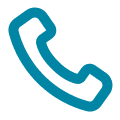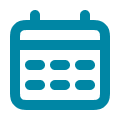Take the first step towards a confident smile by booking your free consultation today!
To successfully complete your orthodontic treatment plan, patients must work together with the orthodontist. The teeth and jaws can only move toward their corrected positions if the patient is cooperative with the appliances as prescribed.
Some of the more common appliances we use are:
- Spacers (Separators)
- Elastics (Rubber Bands)
- Palatal Expander
- Herbst® Appliance
- Forsus Appliance
- Tongue Thrusting/Habit-Breaking Appliance
Spacers (Separators)
WHAT ARE SPACERS?
Spacers are small rubber bands that are placed between your back teeth to create sufficient space to properly and comfortably fit bands at a later date. It is very important that the spacers stay in place until you come back to get your bands on. There are some things you can do to make sure they stay in:
- Please do not eat anything sticky like caramel, taffy, tootsie rolls, gummy bears, Snickers bars, or any other sticky candy.
- Please do not chew gum.
- Do not floss your teeth in the area the spacers are. You can brush your teeth like you normally do.
- Do not pick at the spacers with your fingers or anything else, like toothpicks. It is easy to mistake a spacer for food caught between your teeth, so be careful.
How will spacers feel?
At first, they may feel like pieces of food stuck between your teeth. That sensation may go away in a few days.
Will spacers hurt?
Your teeth may become sensitive. However, this will only last a few days. Any discomfort can be relieved with whatever medication you would take for a headache.
How will I eat with spacers?
You can eat normally! Just be sure to avoid chewy or sticky foods. Also, never remove your spacers once they are in place.
What about brushing with spacers?
It’s always important to brush your teeth. Even with the spacers in place, you need to continue brushing as usual.
How long will I need spacers?
You will need them only long enough to create ample space for your braces. Under most conditions, you need them only for 1–2 weeks.
Elastics (Rubber Bands)
Elastics are essentially rubber bands that are attached usually between the upper and lower teeth. Wearing elastics applies tension to your teeth and causes them to move in a direction that the braces alone can not accomplish. This improves the fit of your upper teeth to your lower teeth. Elastics can be worn in many ways depending on your specific needs.
Are elastics important?
Elastics must be worn to move your teeth and jaw into the proper position. A good analogy is that the braces are the body of the car, but the elastics are the engine. That’s why it’s important to wear your elastics 24 hours a day, 7 days a week unless otherwise instructed.
May I take the elastics off?
If you wear your elastics for several hours, then take them off for a while, put them back on, etc., you will experience back-and-forth movement, and your teeth can set up a resistance that slows or stops your progress (OH NO!). Wearing elastics is like pushing a ball up a hill; if you stop halfway, the ball rolls right back to where you started. Only by constantly wearing your elastics as instructed will you reach the top of the hill! Remove them only to brush your teeth or to put on new elastics. You should wear them constantly, including when you eat a snack, play, and sleep. In fact, the most important time to wear them is when you are eating because then, you are really revving the engine!
How will elastics feel?
Your teeth and jaws may be tender the first few days of wearing elastics. This is normal and should begin to disappear after a few days. Part-time wear does NOT move teeth, but it does cause them to constantly be sore. So if you wear them all the time, you will be rewarded with a great smile and non-tender teeth!
Why do I have a hard time putting elastics in?
It may seem hard for you to put on the elastics at first, however, it will become much easier with practice. In fact, you won’t even need a mirror after a day or two. Before you leave the office, be absolutely sure you understand where to hook the elastics. Placing them incorrectly can be even worse than not wearing them at all because your teeth might move the opposite way of how they need to. If you ever have any questions on how to wear your elastic, please do not hesitate to ask, it can be confusing!
Other tips for elastics:
- Eat with them in place. It may be difficult at first, but it does get easier and teeth will move even faster!
- If your supply is low, just stop by the office to pick more up. Or, call the office and we can easily mail some to you.
- Change the elastics at least every 12 hours (that’s twice a day) even if they are not broken. After a while, elastic lose their strength. It’s easiest to change them after brushing.
- If one elastic breaks and you were wearing them on both sides, replace both sides.
- Carry elastics with you at all times.
- If you happen to forget to insert your elastics one day, don’t double up the next. Just follow your regular instructions.
Proper wearing of your elastics will help give us the best possible treatment in the shortest amount of time. Please call us if you have any questions or concerns. Good luck with your elastics!!!!
Palatal Expander
The palatal expander is for patients whose upper jaw is too narrow. It “expands” (widens) your upper jaw by putting gentle pressure on your teeth, which stretches the center palatal connective suture. Dr. Azariy Yusupov will instruct you about when and how to adjust your expander. When you achieve the desired expansion, you will wear the appliance for several months to solidify the expansion and prevent relapse.
Some helpful tips about your palatal expander:
- Your expander should be turned as instructed. Never turn it in more than instructed.
- You may notice a difference in your speech in the first couple of days after your expander is cemented. The more you speak, the faster you will become accustomed to the appliance, and the faster your speech will become normal again.
- You may notice more saliva than normal in the first couple of days. This is also normal and will soon disappear. Eating may be awkward at first, but you will soon be eating like usual. You may want to stay with soft foods for a day or two.
- Your expander is designed to widen your upper arch. As a result, you will notice a large space between your front teeth. Do not be concerned, this means the appliance is working! This space will be present for only a short time.
- In the beginning, the appliance may make your teeth a little sensitive and sore because of the pressure involved. It is also normal to feel brief pressure at the nose and cheeks. If you feel uncomfortable we suggest that you take whatever medication you would normally take for a headache.
- If you have any questions about your expander or treatment, feel free to contact our office at any time.
Herbst® Appliance
The Herbst Appliance is a functional appliance used to stimulate growth of the lower jaw. It reduces overjet by encouraging the lower jaw to grow forward and by holding the upper jaw back. This fixed appliance is used mostly for younger, growing children and is worn for about 12 months.
How does the Herbst Appliance work?
This appliance consists of metal crowns cemented over your back teeth. The upper crowns have tubes attached to them that are connected to two rods on the lower crowns. This postures your lower jaw forward. The arms are screwed in place to the crowns but you can still move your jaw forward, open, and closed, but cannot move it back. Basically, this stimulates forward lower jaw growth.
How will the Herbst Appliance feel?
At first, they may feel like a mouthful but within a week they will become quite comfortable. As your jaw muscles and joints get used to the new position, you will experience soreness with possible headaches. Take Tylenol, aspirin, or ibuprofen regularly for soreness. This is normal and by the end of the week, it will be comfortable. Also, it may irritate the inside of your cheeks at first but soon the tissue will adjust to the appliance and it will not be a problem. Please call us to report any prolonged cheek or tongue irritation.
What about eating with the Herbst Appliance?
Chewing will be awkward at first. Definitely eat soft, nutritious foods during this stage such as mashed potatoes, apple sauce, macaroni and cheese, pastes, soups, yogurt, eggs, fish, etc. But very soon you will be back to your normal diet. Avoid sticky foods as these can stick to and around your Herbst Appliance and may damage or loosen it. Also, avoid chewing real hard food such as ice.
What is the best way to get used to Herbst Appliance?
First, don’t play with it with your tongue or fingers. Secondly, don’t fight it! Let your jaw go where the Herbst lets it. Don’t try to force your jaw where it is difficult to do so.
Can the Herbst Appliance come apart?
Yes. The most common way is for the rod to slide out of the tube when you open it very wide, as when yawning. If this happens, don’t panic. Go to a mirror, open it wide, and use your fingers to slide the rod back into the tube. If it happens often, be certain to tell us at your next appointment.
Please call us right away if any of the following happen:
- Something breaks. Save any parts you can.
- Crowns that come loose from the tooth.
Forsus Appliance
The Forsus is a fixed appliance that is used when higher forces are needed. Sometimes, elastics are not strong enough to correct a patient’s bite and the Forsus is needed instead. This appliance is simply a spring installed on each side of the mouth that allows the patient to open, close, and move the jaw freely and comfortably.
How will the Forsus Appliance feel?
At first, they may feel like a mouthful but within a week they will become quite comfortable. As your jaw muscles and joints get used to the new position, you will experience soreness with possible headaches. Take Tylenol, aspirin, or ibuprofen regularly for soreness. This is normal and by the end of the week, it will be comfortable. Also, it may irritate the inside of your cheeks at first but soon the tissue will adjust to the appliance and it will not be a problem. Please call us to report any prolonged cheek or tongue irritation.
What about eating with the Forsus Appliance?
Chewing will be awkward at first. Definitely eat soft, nutritious foods during this stage such as mashed potatoes, apple sauce, macaroni and cheese, pastes, soups, yogurt, eggs, fish, etc. But very soon you will be back to your normal diet. Avoid sticky foods as these can stick to and around your Forsus Appliance and may damage or loosen it. Also, avoid chewing real hard food such as ice.
What is the best way to get used to the Forsus Appliance?
First, don’t play with it with your tongue or fingers. Secondly, don’t fight it! Let your jaw go where the Forsus lets it. Your bite will feel normal again in a few days.
Can the Forsus Appliance come apart?
Yes. The most common way is for the rod to slide out of the spring when you open it very wide, as when yawning. If this happens, don’t panic. Go to a mirror, open it wide, use your fingers to compress the spring, and then slide the rod back into the spring. If it happens often, be certain to tell us at your next appointment. If you have trouble re-engaging the spring or have something broken, you may secure it to the archwire with an orthodontic elastic or dental floss as pictured below:
Tongue Thrusting/Habit-Breaking Appliance
What does the Tongue Thrusting/Habit Breaking Appliance do?
Your Habit Appliance is specifically designed to help remind you to keep your tongue from coming forward when you swallow, and to remind you to keep any fingers or thumbs from entering your mouth.
How will the Tongue Thrusting/Habit Breaking Appliance feel?
At first, it will feel like a mouthful, but within a few weeks, it will become comfortable.
What about eating with the Tongue Thrusting/Habit Breaking Appliance?
Chewing may be awkward at first. You may want to stay with soft or even liquid foods for a day or two. But very soon you will be back to a normal diet.
How long will I wear the Tongue Thrusting/Habit Breaking Appliance?
This will depend on the severity of your original problem and how quickly your habit corrects. The faster your habit corrects, the shorter the appliance will have to be in your mouth!
Other tips:
- Don’t play with the appliance with your fingers or flick it with your tongue.
- Don’t forget to brush your appliance every day.
- Keep fingers, thumbs, pens, and pencils out of your mouth.
- When swallowing, place your tongue behind the metal prongs (against your palate). This helps the tongue assume a more favorable position.
- Keep your lips together as much as possible, especially when swallowing and chewing.
- Breathe through your nose.
Your Smile, Our Priority
We’re here to assist with all your needs, whether you have a question, need support, or want to schedule an appointment.

Call Now
Have questions or need assistance? Call one of our locations now and speak with our friendly team.

Find a Location Near You
We have several convenient locations to serve you better. Find the nearest one to you and start your journey to a healthier, beautiful smile.

